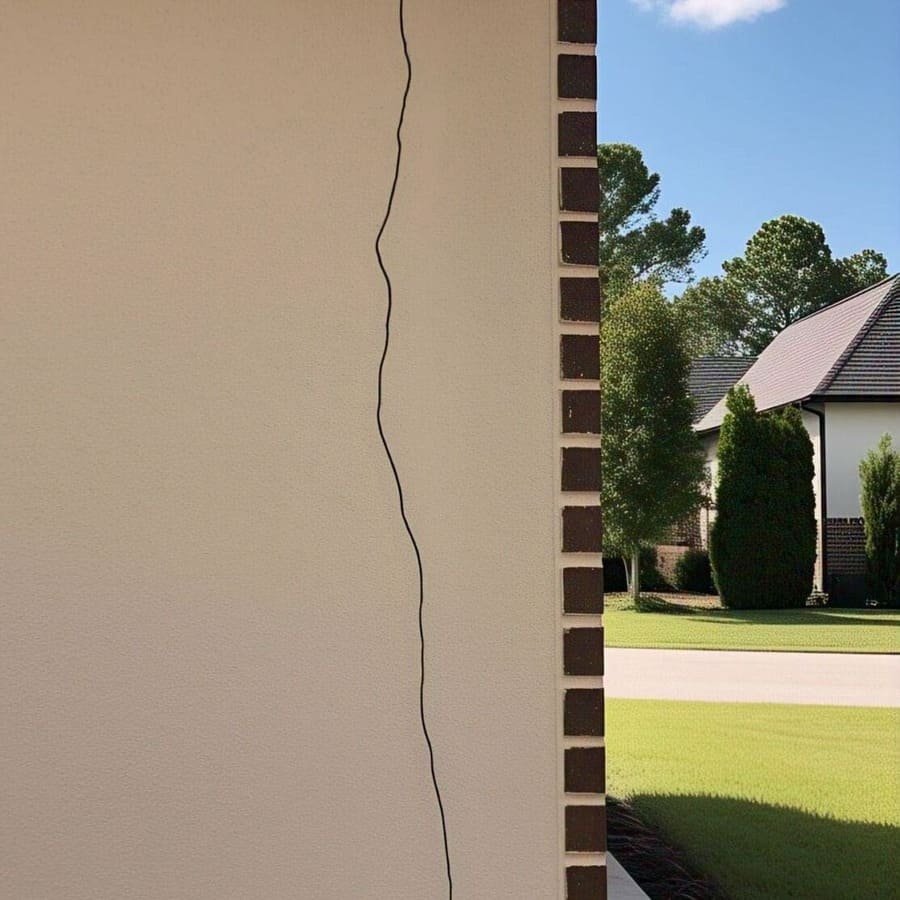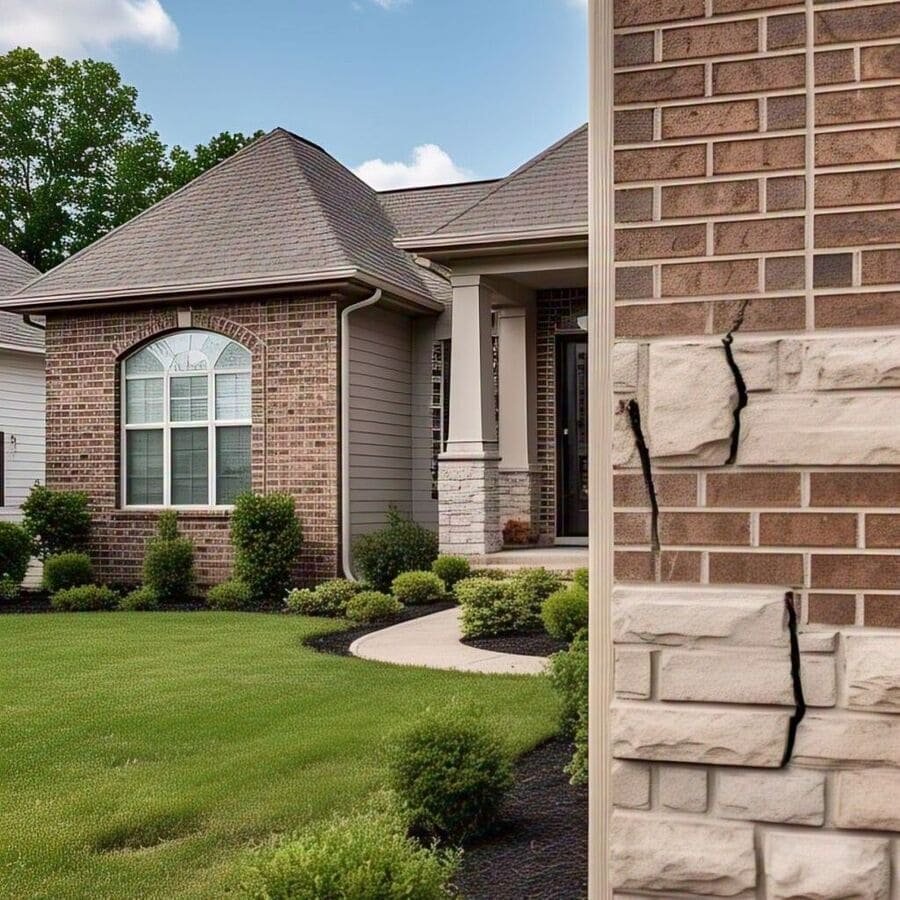Signs Your Foundation Needs Repair: What to Look For
Your home is more than just a place to live; it’s your sanctuary. The last thing you want is for hidden issues to creep up and threaten the safety and stability of your home. One of the biggest problems you could face? Foundation damage.
The foundation of your home is its backbone. Without a solid foundation, everything else is at risk. But, how do you know when it’s time to repair it? Luckily, there are clear signs to look for before things get worse.
Let’s break it down. Here are some common signs your foundation may need repair. Reach out to us if you are looking for Foundation repair in Billings MT
1. Cracks in the Walls or Ceiling
You’re sitting on the couch, watching your favorite show. And then, you notice it. A crack running across the ceiling. Or even worse—a crack in the wall that wasn’t there yesterday.

Why it happens: Cracks in the walls or ceiling are often one of the first signs of foundation trouble. As the ground shifts beneath your home, the foundation can move, causing tension in the walls above. This leads to cracks.
What to look for:
- Thin, vertical cracks on the walls (especially near doors and windows)
- Large or widening cracks (especially if they seem to grow over time)
- Cracks in the drywall or ceiling
What to do: Small cracks might not be serious, but larger ones or ones that get worse over time? They need attention. Consult a foundation expert to evaluate whether there’s a deeper issue.
2. Uneven or Sloping Floors
Ever feel like you’re walking at a slight tilt? No, it’s not just your balance. It could be your floor.
Why it happens: If your foundation shifts or settles unevenly, it can cause the floors above it to slope or become uneven. This can create a noticeable dip or tilt when you walk across certain areas.
What to look for:
- Sloping floors that make it hard to place furniture straight
- Areas where doors or cabinets don’t sit evenly
- Gaps between the floor and baseboards
What to do: You can use a level to check how bad the sloping is. If it’s noticeable, it’s time to get a foundation inspection.
3. Sticking Doors and Windows
Have you noticed that certain doors or windows no longer open or close smoothly? That could be more than just a sticking hinge. It might be a sign that your foundation is settling or shifting.
Why it happens: As the foundation moves, it can change the alignment of your doors and windows, causing them to stick. Sometimes they might even refuse to open or close entirely.
What to look for:
- Doors or windows that no longer fit into their frames properly
- Gaps around doors or windows that weren’t there before
- Difficulty locking or unlocking windows and doors
What to do: If multiple doors or windows seem off, it’s a good idea to get a professional to inspect the foundation.
4. Gaps Between Walls and Ceilings
If you notice gaps forming between the walls and ceilings of your home, that could be a red flag. These gaps can be hard to miss, and they usually form when the foundation shifts.
Why it happens: As the foundation settles or moves, it can pull apart parts of your walls and ceiling. The result is unsightly gaps that indicate a bigger problem beneath the surface.
What to look for:
- Gaps between the ceiling and wall (especially in corners)
- Gaps around baseboards or trim
- Doors or windows that no longer sit flush in their frames
What to do: If the gaps are noticeable, don’t wait for them to get worse. A foundation professional can help you assess whether the damage is minor or if it requires repairs.
5. Foundation Puddles or Water Damage
Water and foundations don’t mix well. If you notice water pooling around the foundation of your home, it could indicate drainage problems that are affecting the foundation.
Why it happens: Water that collects near the foundation can cause soil to expand, which in turn puts pressure on the foundation. Over time, this can cause cracking or shifting.
What to look for:
- Water pooling near the foundation
- Signs of water damage, like rust or mold, around your foundation
- Musty or damp smells near the basement or crawl space
What to do: Poor drainage can often be fixed by improving your landscaping or installing gutters. But if the water damage is significant, you might need to fix the foundation itself.
6. Bowing or Leaning Walls
This is a major sign that something is wrong. If you see walls in your home bowing or leaning inward, it could mean the foundation is being pushed in an unhealthy direction.
Why it happens: The most common cause of bowing walls is hydrostatic pressure, or water pressure on the outside of the foundation. If water collects around the foundation and creates too much pressure, it can cause the walls to bow.
What to look for:
- Bulging or leaning walls in the basement
- Visible cracks in basement walls
- A noticeable inward tilt of walls
What to do: This is not something you can ignore. Bowing walls often require immediate repair. A foundation specialist can help stabilize the walls and address the root cause of the problem.
7. Sagging or Collapsing Crawl Spaces
In older homes, crawl spaces are often neglected. Over time, moisture, poor drainage, and foundation shifts can lead to sagging floors or even full collapse in extreme cases.
Why it happens: If the foundation walls supporting the crawl space are weakened or have moved, they might no longer be able to carry the weight of the home properly.
What to look for:
- Sagging floors in rooms above the crawl space
- Mold or mildew in the crawl space
- Cracked or leaning foundation walls in the crawl space
What to do: This problem needs to be addressed quickly. Water damage in crawl spaces can lead to bigger issues, including structural instability and health risks from mold growth.
8. Visible Foundation Cracks
Found any cracks in the foundation itself? That’s a serious issue that should not be ignored.
Why it happens: Cracks in the foundation can be caused by settling, shifting, or excessive moisture. These cracks weaken the foundation, leaving your home more vulnerable to further damage.
What to look for:
- Large, horizontal cracks across the foundation
- Vertical or diagonal cracks that seem to widen over time
- Gaps around windows or doors in the foundation
What to do: Large cracks in the foundation often require professional repair. These cracks won’t heal on their own and will likely get worse if left unchecked.
9. Chimney Shifting
If your home has a chimney, it’s another part of your home that can signal foundation issues. A leaning or tilting chimney could be an early warning sign that the foundation is settling unevenly.
Why it happens: The weight of the chimney combined with the movement of the foundation can cause it to shift, crack, or even pull away from the house.
What to look for:
- A chimney that appears tilted or leaning
- Cracks forming in the chimney itself
- Gaps between the chimney and the house
What to do: Don’t wait. A leaning chimney could indicate serious foundation problems. Get a professional to assess the situation.
10. Increase in Insect or Rodent Activity
This might sound strange, but an increase in pest activity could point to foundation issues.
Why it happens: If your foundation has cracks or gaps, insects and rodents can make their way inside. Insects, especially termites, can weaken the structure further, causing even more damage.
What to look for:
- Visible pests like ants or termites
- Rodents or critters entering through small cracks in the foundation
- Signs of wood damage from termites or other pests
What to do: If pests are suddenly a bigger problem than usual, check for foundation cracks. A foundation repair might help keep your home safe from further damage.
Conclusion
Your home’s foundation is one of the most important parts of your house. When it’s in trouble, everything else is at risk. The good news? Identifying the signs early can save you from expensive repairs down the road. So, keep an eye out for cracks, uneven floors, sticking doors, and other signs mentioned above.
Remember: foundation problems don’t just go away. Addressing them early on ensures your home stays safe and stable for years to come. If you notice any of these signs, don’t wait. Call a professional and take action before the damage gets worse.


